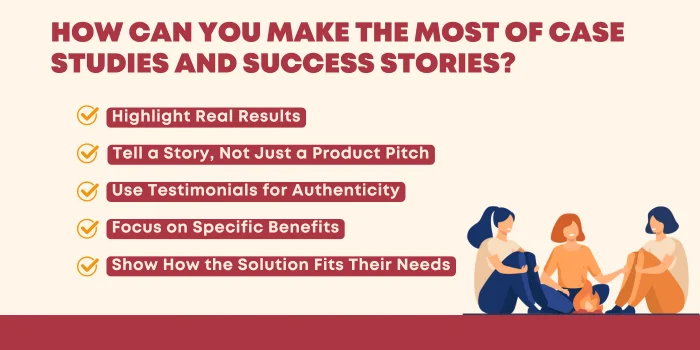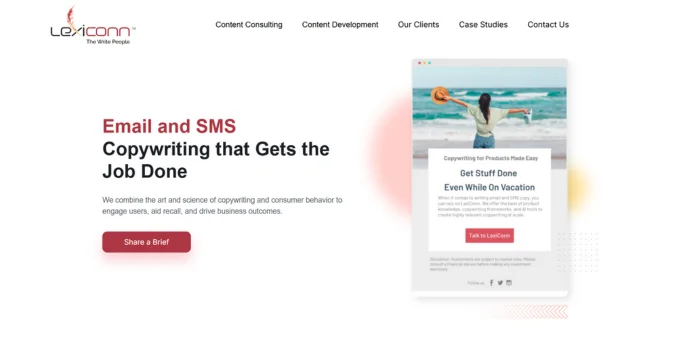How would it feel if learning was designed just for each student—where everyone feels engaged, supported, and genuinely excited to learn? That’s what EdTech is all about these days. It’s no longer just a bunch of digital tools thrown together; it’s a movement toward creating connections that truly make a difference for students, teachers, and professionals alike.
As EdTech grows, it’s clear that standing out isn’t just about the technology. It’s about building a sense of community, offering support, and reaching people in ways that truly matter. Content marketing can help EdTech companies make these connections.
Here’s a look at some simple but effective content marketing strategies for EdTech.
Start by gathering data about the groups you’re targeting – students, teachers, and schools. You can collect this data for your content marketing strategy through surveys, interviews, social media polls, or even by looking at the user data of your existing customers. For example:
Once the audience data is collected, creating personas helps make the information actionable. Personas are fictional profiles that represent each main group, capturing key details like goals, challenges, and preferences. Grouping the data into personas makes it easier to shape content that speaks directly to each audience segment.
For example, consider a student persona:
Persona: “Motivated Maria”
Creating two or more similar personas for each group, such as teachers and school administrators, helps build a content marketing strategy that’s relevant and effective for each group. This gives the marketing approach a clear focus.
Blogging is one of the most effective content marketing strategies, especially in digital learning. When you write blog posts that address common questions, challenges, and trends in education, you show your audience that you’re not just a company selling a product – you’re an expert in the field.
These posts provide valuable information and help with search engine optimization (SEO), making it easier for potential customers to find you online. Need blogs for your content marketing strategy that drives your EdTech brand forward?
Look no further! Lexiconn creates engaging, SEO-optimized blog posts that connect with your audience and improve your brand's presence.

Ready to create blog content that engages and educates? Here’s a quick-start guide to make it happen:
Creating a calendar keeps your content marketing strategy on track. Mix up the content with a few “how-to” guides, practical lists, and maybe a success story or two. Add a couple of evergreen topics (the ones that stay relevant long-term) and some trend-focused posts to keep it interesting.
Planning ahead keeps the content consistent and avoids the last-minute scramble for ideas.
Let keywords do some of the work for your content marketing by weaving them naturally into titles, headings, and paragraphs. Adding an FAQ section is a smart move too—it helps answer direct questions that people are searching for. The better the SEO, the more likely new readers will find the blog on their own!
To make your content marketing more effective, post about it on social media, add it to email newsletters, or even share it in EdTech groups online. Don’t be shy about engaging with readers who comment or share the post—it builds a real connection and brings readers back for the next one.
Social media is a great platform for your content marketing strategy because it becomes interactive hubs where students, teachers, and even entire schools can connect, share, and grow. Platforms like LinkedIn, Facebook, and Twitter are perfect for reaching educators and administrators, while Instagram and TikTok are ideal for student engagement. Here’s how to make the most of these spaces:

Interactive posts like polls, Q&As, or "This or That" choices can instantly get people involved. Ask questions that spark discussions or share quick tips that make teachers' lives easier or students’ learning journeys more exciting.
Short, engaging videos are a great way to connect with a wider audience.
Inviting users to share their experiences with the platform creates genuine testimonials and builds trust. Encourage teachers or students to post about how they use the platform in creative ways, tagging the brand and using a unique hashtag to make these posts easy to find.
Repost this content to showcase real-life success stories that add credibility and warmth to the brand.
Content marketing works well with extra hashtags in the caption or description of a post! Hashtags make posts searchable and connect them with broader conversations.
Mix in both general hashtags (#EdTech, #DigitalLearning, #OnlineEducation) and unique brand-specific ones. Seasonal or trending hashtags are helpful, too, especially around events like back-to-school season or exams.
Social media is also a great place to celebrate successes. Share news on recent upgrades, highlight inspiring stories from students or teachers, or post educational tips. Stories that highlight real impact bring the brand to life and keep the community inspired.
A key but often overlooked aspect of content marketing in EdTech is "microlearning." Instead of lengthy articles or tutorials, offer short, easy-to-digest learning modules or quick tips that learners can access on the go.
This taps into the growing trend of people preferring shorter, on-demand content, making it easier for educators and students to engage with your platform during busy times.
Done well, social media becomes more than a posting platform—it becomes a vibrant community where students, teachers, and schools all feel part of a connected learning experience.
Want to show just how powerful your EdTech platform can be? There's no better way than hosting webinars and live demos! These interactive sessions allow you to demonstrate your product in real time, answer questions on the spot, and give your audience an inside look at how your tools solve their specific challenges.
Here’s why webinars and live demos are a must-have in your content marketing strategy:
Nothing speaks louder than real-world results. Case studies and success stories are powerful tools for showcasing how your EdTech product has made a difference. They bring your solution to life, offering a relatable picture of how it can help both schools and individual learners achieve their goals.

Want to keep your digital learning audience coming back for more? Offering valuable resources is one of the best ways to attract and retain people in the EdTech industry. Think beyond just selling a product—give your audience the tools and information they need to make the most of your platform and their own educational goals.
In digital learning, trust is a huge factor in making purchasing decisions. One way to build trust is by collaborating with influencers or thought leaders in the education space. These individuals have a built-in audience and can help promote your platform to a wider group of potential customers.
Start by identifying key influencers who align with your brand values. Look for educators, tech experts, or bloggers who have a strong following and share similar interests in EdTech. Reach out to them with a clear, compelling offer—whether it's reviewing your product, co-hosting a webinar, or simply giving feedback about your platform.
But how to get their attention? Personalize your message! Show them why your product fits their mission and how it can help their audience. Don’t just ask for a shout-out—propose a partnership where both parties can benefit.
Once you get their attention, create engaging content together for a live demo, an Instagram story, or a YouTube video. These collaborations provide exposure to their audience, building trust and driving traffic to your site.
The key here is building a genuine relationship. Don’t rush things; create long-term partnerships that help both sides grow. Their endorsement could be the trust boost your brand needs to stand out in the competitive digital learning space!
Email marketing is a fantastic way to nurture relationships with your audience for digital learning. Send regular newsletters that include valuable insights, blog posts, product updates, and event invitations. Segment your audience so that you can tailor your emails based on their interests.
Students seeking a digital learning experience might appreciate tips for succeeding in online learning, while educators may want updates on new features that help them in the classroom. To make your emails visually engaging, you can design professional and eye-catching email banners with Canva banner kaise banaye, ensuring your messages stand out and leave a lasting impression.
The key is to stay consistent, keep your emails informative, and make sure your audience feels like they’re part of your community. Finding emails for email marketing, especially in the digital learning space, requires a strategic approach while respecting privacy laws and ethical standards.
Here are nine tips to help gather emails for your campaign:
Let Lexiconn help you craft personalized email copy that speaks directly to your target audience!

To truly stand out in the digital learning space with your content marketing strategy, your content needs to do more than inform—it should connect, engage, and inspire. Focusing on real-world applications, user experiences, and community-building will set you apart from the competition.
At Lexiconn, we specialize in creating content that goes beyond traditional marketing. We craft stories, guides, and resources that build trust and drive action. With our expertise in humanized writing, we plan content marketing strategies and help EdTech brands connect deeply with their audience and turn every piece of content into a stepping stone for growth.
Connect with us today and book a free 30-minute consulting session.



I have read and accept the Privacy Policy
Read More